The Mazda 3 Shows a Porsche-Like Obsession with the Details
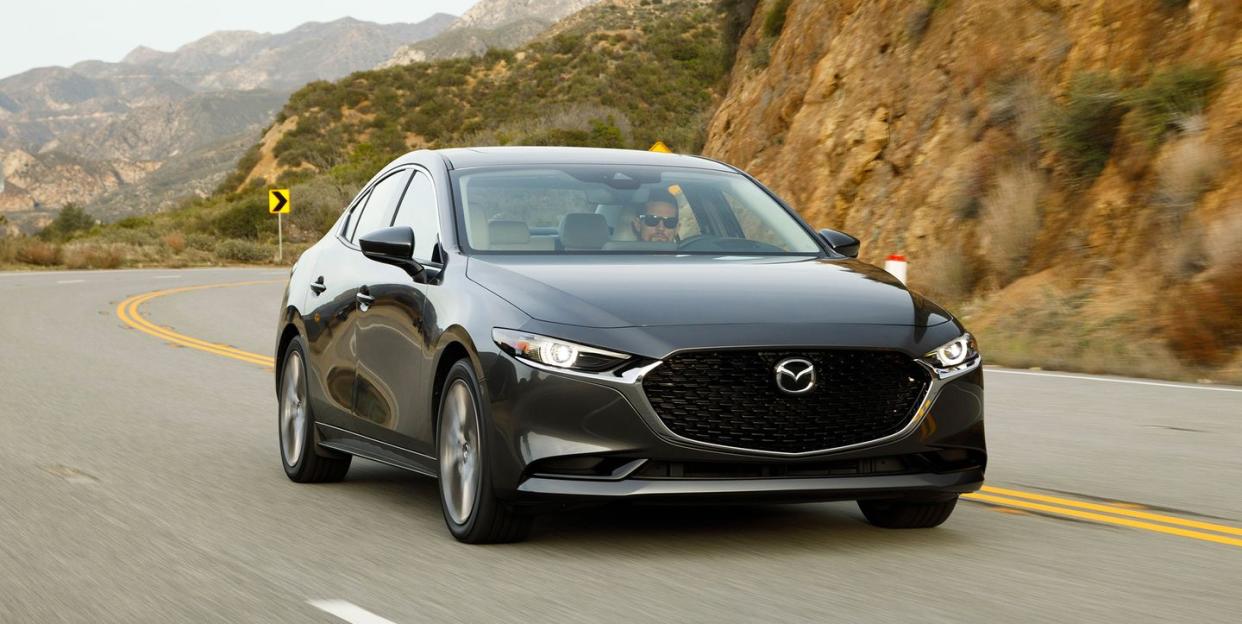
Reviewing cars is a weird game. One minute you're in a 550-hp Porsche 911 GT3 RS, the next you're driving a 186-hp 2019 Mazda 3 sedan, and then the day closes out with a custom, 427-hp 1995 Porsche 911 restomod by Gunther Werks. Aside from all three being gasoline-powered vehicles, there doesn't appear to be much in common between the three. But going from one to the other in the span of a day reveals a shared obsession with fine tuning the little things.
Since this is the Mazda 3 review, we'll try to avoid discussing Porsches. The new 3 is filled with examples of places where its engineers and designers anguished over things most owners won't immediately notice but will certainly appreciate-even if they can't put their finger on why they like the car, which is ironic because it's their fingers that get the attention. In the 3, Mazda went to the effort to make all of the 3's switchgear feel cohesive. Each button offers the same tactility and reacts like the others. The knobs for the climate-control system, the audio volume, and the infotainment controller (Mazda calls it the Commander) all feel the same and turn with similar resistance. While the subtleties of the clicks might not be immediately apparent to customers, these small things add up to a difference. The cumulative effect is that the 3's interior exudes a quality similar to that of high-end audio equipment or cars that costs tens of thousands more than the new 3's $21,895 base price.
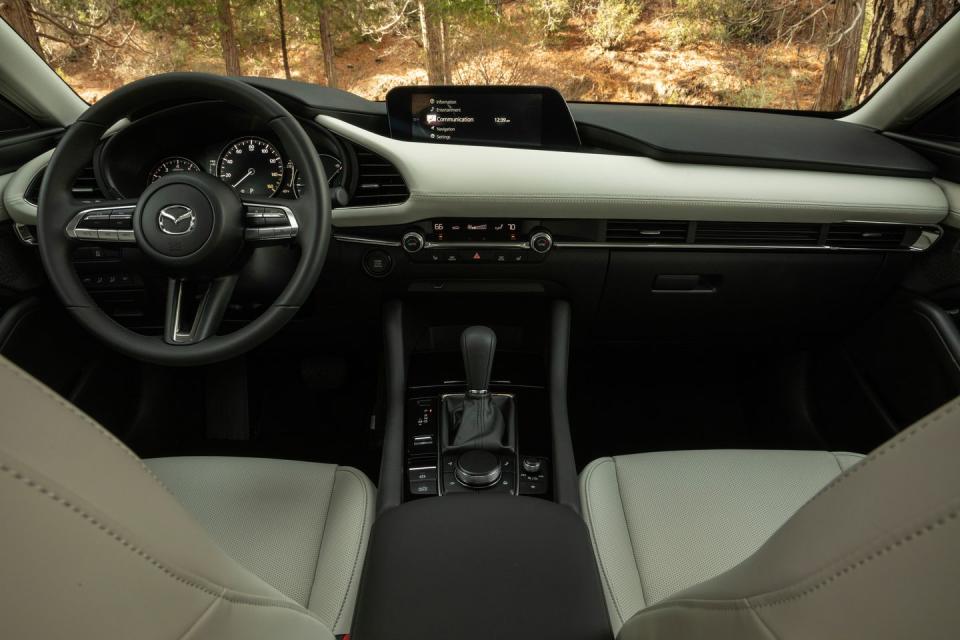
The New 3's Thoughtful Trappings
What will be obvious to potential buyers are the quality materials and the clean, simplified interior design. Large analog gauges flank a digital speedometer that mimics an analog gauge. An optional head-up display projects clear info onto the windshield, replacing the lame gunsight reflective display on the outgoing 3 that folded out of the top of the instrument binnacle and showed your speed in fuzzy numbers. The HVAC controls appear to have been borrowed from Audi, and the steering wheel looks like it came out of a BMW. A new 8.8-inch screen is standard on every model and sits on the dashboard, canted toward the driver. In the previous-generation car, the infotainment screen could be operated as a touchscreen or by the central controller. Now, it's out of reach and entirely operated by the larger console-mounted knob. A volume knob sits next to the Commander interface; pushing it to the left or right lets you skip to the next song or station, another touch shared with Audi. The infotainment's menu structure is logical, responses are quick, and each individual function gets an explanation and a graphic that, for example, patiently explains that the Bose Centerpoint feature is how you adjust the surround sound.
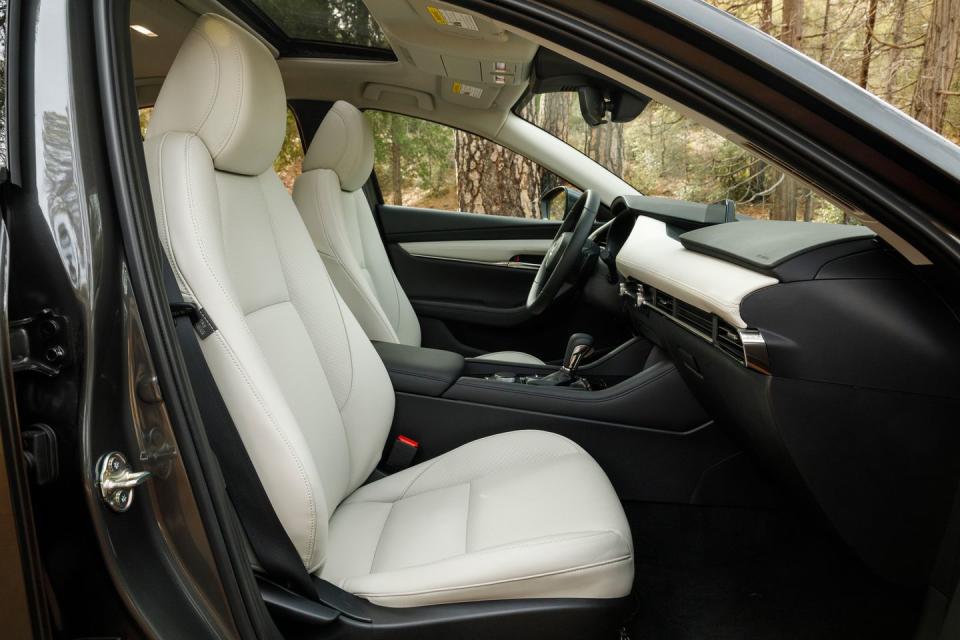
While the 10-speaker Bose system is a tempting option, the stock audio system's six-speaker setup is remarkably clear and powerful. Both systems lack a door-mounted midrange speaker. Instead, that speaker gets its own enclosure and is tucked under the instrument panel, just below the base of the A-pillar and ahead of the door. Hiding those speakers ensures that the door won't rattle in response to high volumes, and it removes the hole from the door itself, reducing outside noise. To keep your in-car phone conversations private, the audio system is set up to prevent anyone outside from hearing embarrassing news from your urologist. At a normal to even a sort-of-loud volume, it's remarkable how muted it is outside the car.
Dynamic Tuning
Although we were sold on the merits of the audio system, we didn't fully buy into Mazda's newfound obsession with the pelvis. Okay, that sounded a little weird. Engineers on hand tried to convince us that the 3's new front seats locate the pelvis in a way that eases the work required by the occupant's upper body to control itself in response to bumps and corners. They made a lot of hay about the importance of the new driver's seat, which offers more thigh support to improve the driving position and, of course, that pelvic position. Indeed, it's a comfortable seat, but it doesn't feel any different versus our preferred driving position. We thought the chassis tuning and the extra 0.8 inch added to the telescoping action of the steering wheel were substantially more important.
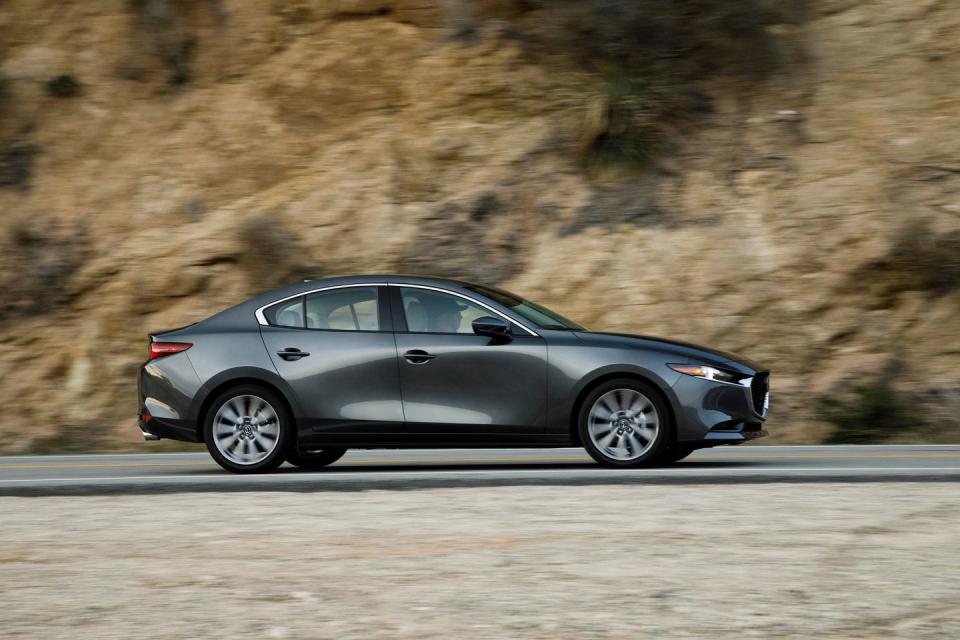
The big news with this 3 is that the multilink rear suspension has been replaced with a simpler torsion-beam axle. Fortunately, this doesn't lead to the collapse of civilization that you might expect. The sedan and hatchback both get the same tune, so even though we only drove sedans, we can expect the hatch to handle similarly. A 16-inch wheel is standard, and our sedan came on optional 18-inch wheels. All-season tires are fitted to both wheel sizes. As you might expect with a relatively low-profile 215/45R-18 tire, the ride is definitely firm, but impacts are dispatched quickly, and even harsh ones are dissipated without drama.
Bending the suspension into a few hard corners reveals good body control. Turn-in is a little sluggish for a Mazda, and the steering ratio could be quicker. Chassis engineers explained that the choice to tone down the helm's initial response was a conscious one. When given a quick rack and a reactive front end, many drivers end up dialing in too much steering and then correcting through the corner, so Mazda tuned the 3 to offer a more natural steering progression. Admittedly, this gripe may have something to do with the lack of a palate cleanser between driving the razor-sharp GT3 RS and the Mazda. While we did adjust to the steering inputs and softer responses, we'd definitely like more feedback through the wheel.
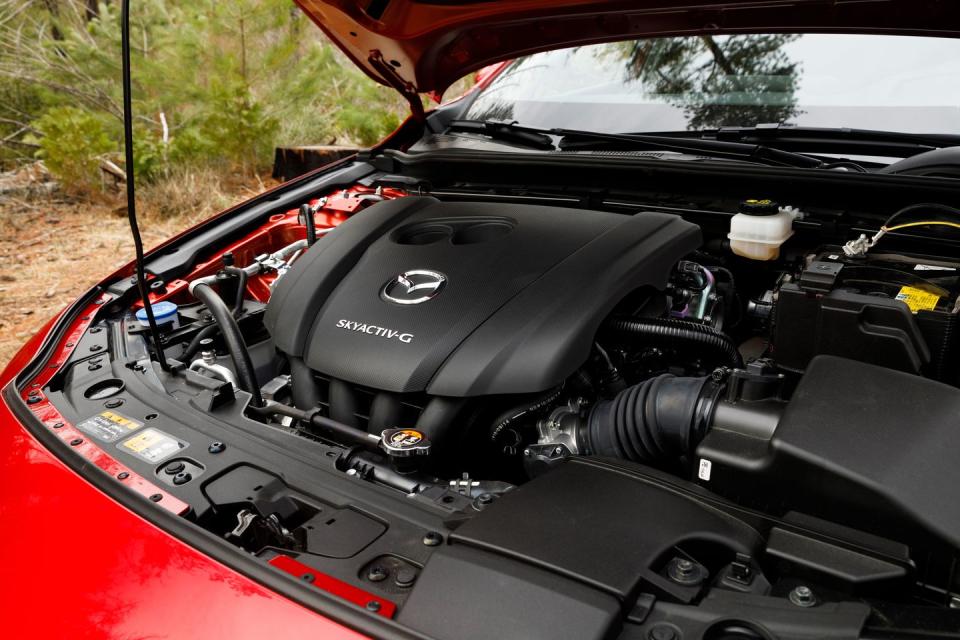
No Turbo for You
A six-speed manual transmission will be available on the hatchback, but sedans are limited to a very smart six-speed automatic that will expertly hold ratios into and through corners. Whoever did the transmission calibration clearly understands how to pick a gear. Sitting next to the transmission is a carryover 2.5-liter inline-four making 186 horsepower at 6000 rpm and 186 lb-ft of torque at 4000 rpm. The engine is adequately powerful and should at least match the 30-mpg combined EPA rating that the previous 3 achieved with the 2.5 and the automatic. But it lacks the easy low-end pull of turbocharged rivals from Honda, Volkswagen, Kia, and Hyundai. There isn't much of a push even when you spin the engine toward its 6500-rpm redline. Based on the new cars' curb weights of roughly 3000 pounds, we expect a zero-to-60-mph figure of 6.9 to 7.2 seconds.
At least the four's labors remain far offstage. Road and wind noise are largely hushed, although we'd need to drive it back to back with its competition, as well as at the test track, to determine if it's a class leader. An additional inch in the 3's wheelbase, now at 107.3 inches, is likely why rear-seat room is good enough for six-footers to sit behind themselves without their knees touching the back of the front seat. Uber riders will appreciate the space.
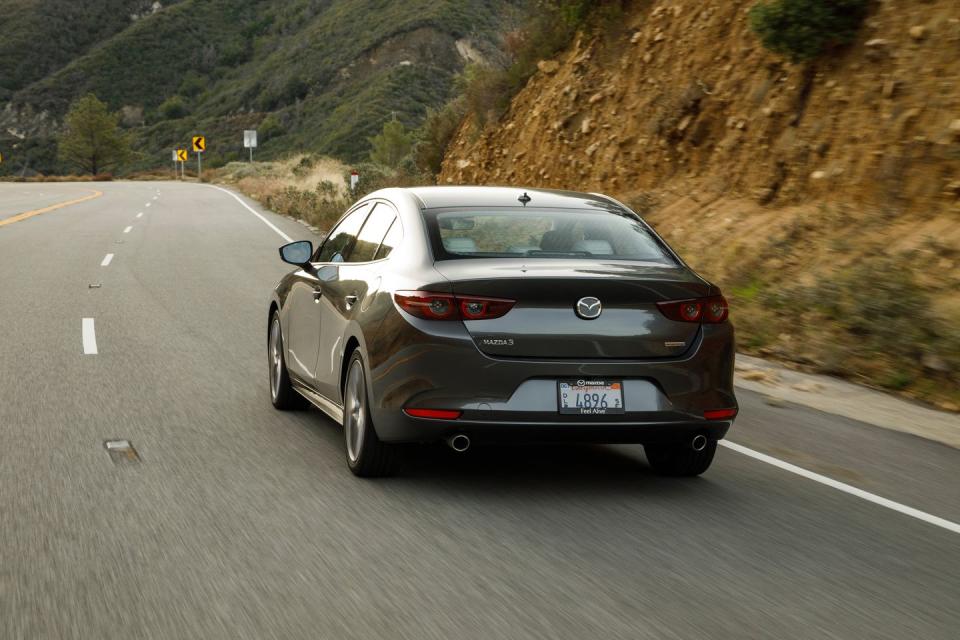
Styling Makes a Statement
The 3's new bodywork is easy to appreciate as well. With styling purposely designed to omit sharp cutlines along the body sides, each panel flows into the other. While we prefer the hatch's more aggressive design and tidier 175.6-inch length, the longer sedan does its best to get the proportions right. Small sedans are the hot-dog fingers of the car-design world: stubby, inelegant, and uglier the longer you look. The 3 combats this with a low and relatively long trunk and a handsome nose.
While sedans open at $21,895, Mazda is asking $24,495 for the base hatch. All-wheel drive is coming after the initial launch in March, and it'll add $1400 to most models. There's no discount for the stick-shift gearbox, and Mazda thinks that manual interest means you'll also want the Premium trim level, so start searching the couch cushions for $28,395. If that seems high, we'd have to agree. A base Volkswagen GTI starts at $28,490, and while the Mazda at that price has more equipment, we'd rather have the sportier GTI. Keep the price below the VW's entry point, though, and the 3 is a refined standout in its segment, even when you drive it on the same day as two very special Porsches.
('You Might Also Like',)

